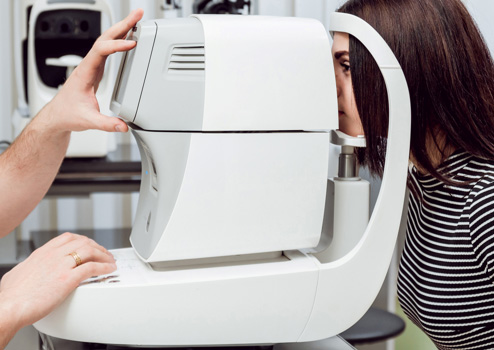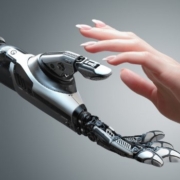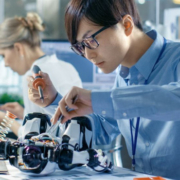Industrial design Prototype: What You Need To Know
Industrial prototypes can be produced by industrial designers to validate their ideas for a product or process. Aside from the aesthetics, prototypes should also mimic ergonomics and functionality of the final product. They should be accurate representations of the designer’s vision and be usable to some degree. They should be usable enough for other teams to evaluate and test the finished product. A successful industrial prototype should be made of material that is similar to that of the final product.
What is the Industrial prototype?
The industrial design prototype is a product designed to evaluate the feasibility and effectiveness of a new technology. It is the most expensive phase of the product development process. It is based on several optimization tests that ensure that the final design will be simple to manufacture. It is an integral part of design for manufacturing, which is a general engineering practice. This process uses general manufacturing methods such as machining, injection molding, and other general techniques to create a physical representation of the product.

A high-quality industrial prototype can be created using 3D printing or CNC technology.
- 3D printing process involves adding layers of material and assembling them in a manner that mimics the final product. Once the prototype is completed, it can take anywhere from a few hours to a few days. By reducing manufacturing time, 3D printing has helped many industries find more effective solutions. With the help of 3D printing, the process of creating an industrial prototype is 90 percent faster than traditional processes.
- CNC prototype machining is now also welcomed , especially for most of metal material and hard plastic parts ,Its surface finished and tolerance as well as material features to meet customer’s test goal .
The process of the development vs manufacturing
The next step in the development of an industrial prototype is the CAD image. This prototype is created using the specifics from the CAD image. The physical version of the product allows designers to find any weaknesses or flaws in the design. The next step in the manufacturing process is to create a functional industrial prototype. A high-quality industrial prototype is a must for any company to produce a quality product. There are a number of advantages in using a CAD-to-physical process.
The process of manufacturing an industrial prototype is vital in many fields. A prototype is used to test the design for its effectiveness and functionality before it becomes a finished product. It can be used to refine an existing product, and can even serve as a basis for new products. Using a CAD model in the manufacturing process can also help with the manufacturing process. This can be useful when there are multiple changes required. It is an essential tool for many industries.
The industrial prototype stage is crucial to the creation of a product. During the initial development process, the product is a concept, which is a sketch or a design. It is not fully functional, but it can be a good model. It will be a functional prototype. The design will not be final, but it will give the company an idea of how it will look and function. It will help them with the production process.
The Benefits of an Industrial Prototype
There are several benefits to developing an industrial prototype. First, it is cheaper than the final process. Second, it produces results that are similar to the finished product. Third, it helps validate the design. For example, stakeholders and end-users can evaluate a functional prototype for manufacturability and UX design flaws. It also enables testing the effectiveness of the product. Lastly, rapid prototypes allow designers to test their products without having to wait for them to be perfected.
The industrial design prototype is created to test various manufacturing processes. Creating a functional prototype is the last step before the final production version. Typically, engineers recommend building a physical prototype before moving forward with the design. They know which materials work best and can recommend 3D printing or CNC machining for certain components. However, it is not recommended to make the product without the approval of the design team. If this is the case, the prototype model should be built using CAD or SolidWorks.
After a successful design review, the next step is to create a paper prototype. Paper prototypes allow designers to better understand the concept before investing in a physical prototype. A preliminary design is useful to share with the design team and stakeholder teams. After a thorough evaluation, a working industrial prototype will reveal the strengths and weaknesses of the product. It may help improve the product or make it more efficient. In the end, the prototype work will be a valuable tool for the company.
The importance of rapid prototypes
Prototypes have other benefits, such as testing the functionality of a product. The prototype is a good tool for customer feedback. A product’s success depends on many factors. It must be marketed in a way that will appeal to customers. It is important to know how the market works to ensure that it is a good fit. It is essential to know what customers want before launching it on the market. Then, the prototype can be made to make sure that it meets their needs.
Prototypes are an essential part of the manufacturing process. They allow manufacturers to test the functionality of a product and scale it to make it more efficient. Moreover, industrial prototypes are a great tool for companies that need to find a specific product for a specific market. You can even create a production-grade prototype before you release it in the real world. This is a great way to get a feel for a new product.
The bottom line
A prototype can help designers test different designs and features. The CAD model should mimic the ergonomics and aesthetics of the final product. It should be an accurate representation of the designer’s vision. Similarly, a physical prototype allows a product to be tested for flaws and weaknesses. This is the ultimate goal of any industrial project. It is crucial to the success of the end product. So, industrial prototypes can help you test the design, too.


